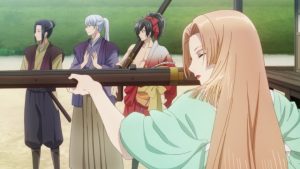 I know most of you aren’t watching (which probably means you’ll never read that) but I’m quite fond of Kochouki: Wakaki Nobunaga. It’s like a vintage DEEN series in some senses – nothing fancy production-wise but rather pretty, vaguely shounen-ai without being too obvious about it, very good at world-building in pre-industrial Japan. And the way it blends history and fancy without ever devolving into fantasy is a breath of fresh air in the overcrowded space that is Oda Nobunaga anime.
I know most of you aren’t watching (which probably means you’ll never read that) but I’m quite fond of Kochouki: Wakaki Nobunaga. It’s like a vintage DEEN series in some senses – nothing fancy production-wise but rather pretty, vaguely shounen-ai without being too obvious about it, very good at world-building in pre-industrial Japan. And the way it blends history and fancy without ever devolving into fantasy is a breath of fresh air in the overcrowded space that is Oda Nobunaga anime.
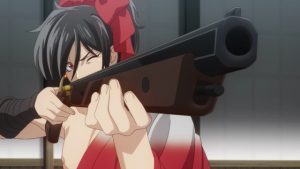 I mentioned last week that Nobunaga’s behavior at his father’s funeral was said to have caused one of his most trusted retainers to commit seppuku in an attempt to scare the boy straight (though that chain of events is by no means universally accepted as fact). Well, that retainer would be Hirate Masahide, and while this episode deals with his final days, events play out in a totally different fashion than they do in the history books. Hirate was indeed hugely respected – as a samurai in battle, as a diplomat, as a tea master and as a man. Even his rivals for power in the Oda inner circle admired and even feared Hirate, who was truly formidable even well into his 60’s (which at the time, was damn old).
I mentioned last week that Nobunaga’s behavior at his father’s funeral was said to have caused one of his most trusted retainers to commit seppuku in an attempt to scare the boy straight (though that chain of events is by no means universally accepted as fact). Well, that retainer would be Hirate Masahide, and while this episode deals with his final days, events play out in a totally different fashion than they do in the history books. Hirate was indeed hugely respected – as a samurai in battle, as a diplomat, as a tea master and as a man. Even his rivals for power in the Oda inner circle admired and even feared Hirate, who was truly formidable even well into his 60’s (which at the time, was damn old).
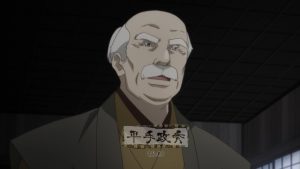 Rather than taking his own life at Nobuhide’s funeral, this version of Hirate is shown standing with Nobunaga even as most others continue to press – openly or covertly – for his replacement by younger brother Nobukatsu. This includes the rival branch of the Oda clan based at Kiyosu Castle. We once again see Oda’s bold and forward-thinking ideas – like modernizing the use of musketry and building an attacking force around it – mocked as scatterbrained eccentricity by most of his retainers. Eventually of course Oda’s outside the box thinking and openness to “barbarian” weapons, tactics and general thinking would make him the most powerful man in Japanese history to that point – but indeed, he faced doubters such as this all through his early days of rule.
Rather than taking his own life at Nobuhide’s funeral, this version of Hirate is shown standing with Nobunaga even as most others continue to press – openly or covertly – for his replacement by younger brother Nobukatsu. This includes the rival branch of the Oda clan based at Kiyosu Castle. We once again see Oda’s bold and forward-thinking ideas – like modernizing the use of musketry and building an attacking force around it – mocked as scatterbrained eccentricity by most of his retainers. Eventually of course Oda’s outside the box thinking and openness to “barbarian” weapons, tactics and general thinking would make him the most powerful man in Japanese history to that point – but indeed, he faced doubters such as this all through his early days of rule.
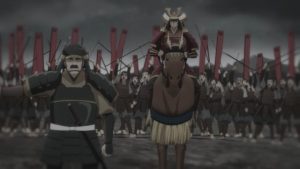 Hirate was not one of those doubters, and acts as Nobunaga’s main source of support even while hiding a serious illness. We also see the strong bond between Inuchiyo – who comes of age and indeed is now Maeda Toshiie – and Nobunaga grow after he’s roped into a plot to discredit Hirate but steered clear of it by Nobunaga’s sister. Changing the world is going to make you a lot of enemies, and Nobunaga was certainly good at both those things, but those who were loyal to him would come to be fiercely loyal (with one historically notable exception, if history is to be believed).
Hirate was not one of those doubters, and acts as Nobunaga’s main source of support even while hiding a serious illness. We also see the strong bond between Inuchiyo – who comes of age and indeed is now Maeda Toshiie – and Nobunaga grow after he’s roped into a plot to discredit Hirate but steered clear of it by Nobunaga’s sister. Changing the world is going to make you a lot of enemies, and Nobunaga was certainly good at both those things, but those who were loyal to him would come to be fiercely loyal (with one historically notable exception, if history is to be believed).
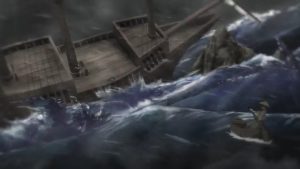 Hirate does indeed see his last days here, but not before delivering (thanks to the gratitude of a shipload of foreigners he rescued in a storm as a younger man) the 500 muskets he’s promised his lord – muskets the youth will use to crush the Kiyosu branch’s aggression once and for all. We see the pillars of Nobunaga’s rise to power taking form here – openness to foreigners, ambition, fearless invention and the loyalty of a trusted few. And it’s probably not historically inaccurate to suggest that Hirate Masahide had a hand in guiding the young Nobunaga in these directions.
Hirate does indeed see his last days here, but not before delivering (thanks to the gratitude of a shipload of foreigners he rescued in a storm as a younger man) the 500 muskets he’s promised his lord – muskets the youth will use to crush the Kiyosu branch’s aggression once and for all. We see the pillars of Nobunaga’s rise to power taking form here – openness to foreigners, ambition, fearless invention and the loyalty of a trusted few. And it’s probably not historically inaccurate to suggest that Hirate Masahide had a hand in guiding the young Nobunaga in these directions.


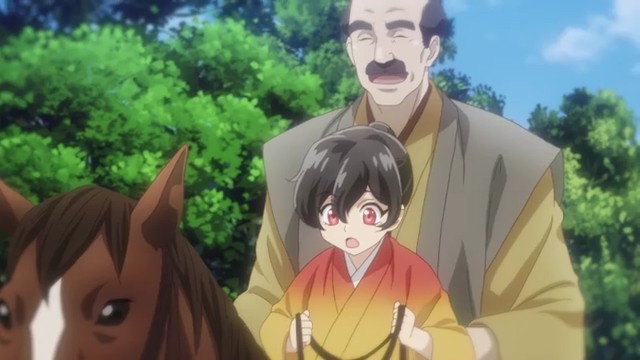

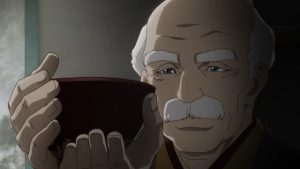
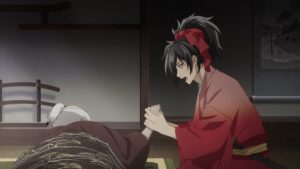
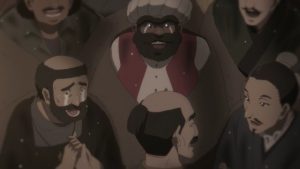
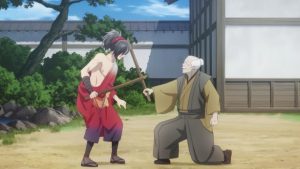

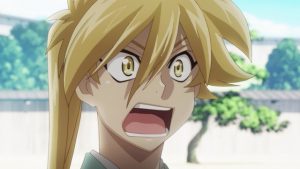
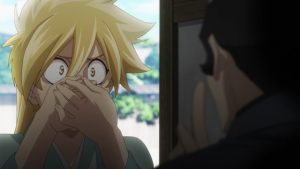
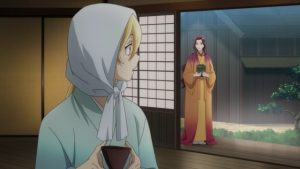

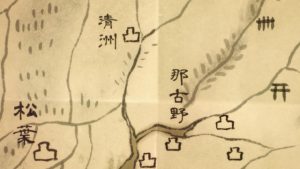
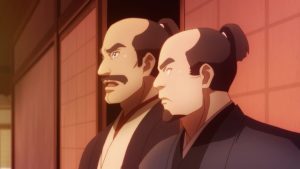
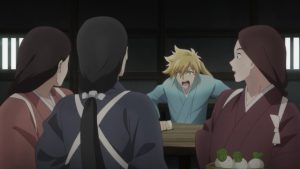


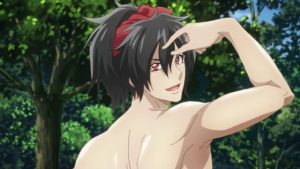
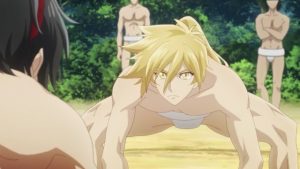
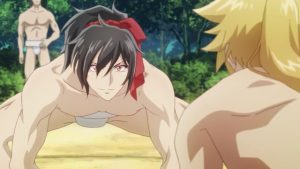

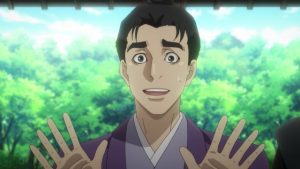
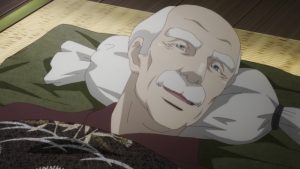
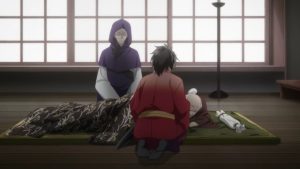

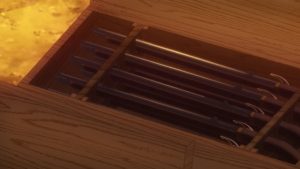



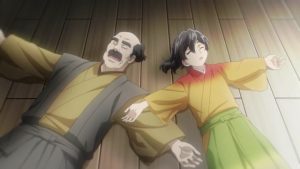

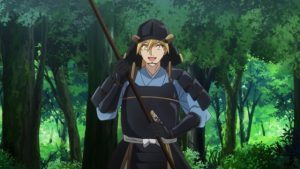
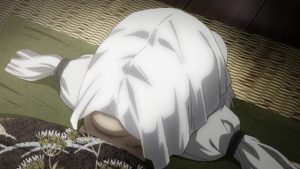
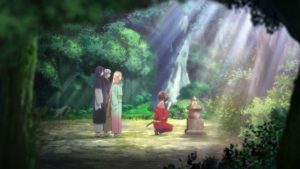
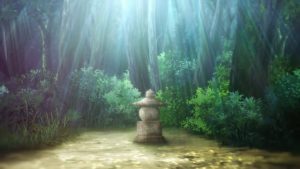
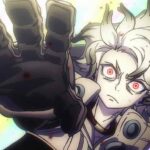
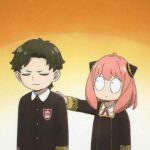
Derrick
July 31, 2019 at 6:29 amperiod drama is fascinating no because we can see how they live, their values, their tools/utensils etc
Gracie
July 31, 2019 at 8:21 amBut the narrator does omit the scorched earth thing since they mention that Nobunaga took those domains “and burned the surrounding crop-fields, leaving the land denuded and barren”. The comment stroke me precisely because the show can have a light tone at times.
Gracie
July 31, 2019 at 11:00 pm*Oooops, meant *doesn’t omit* of course.
Guardian Enzo
July 31, 2019 at 8:35 amOoh, I missed that somehow – thanks for pointing it out.